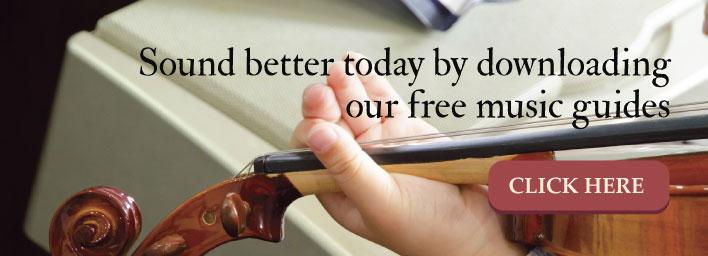How to Create Your Unique Performance Style

Beginner musicians often want to develop their own “sound’ and performance style. They want to be unique, and cultivate a performance technique that sets them apart from all others. Yet, because music educators typically focus on helping students gain execution skills, actual performance abilities can get lost in the day to day efforts.
Rather than ignoring this crucial element of a music education, young musicians need to learn the tools that will support their individuality. Knowing how to incorporate your personal performance technique and unique playing style will help you embrace music instruction on a personal level and inspire you to reach new heights.
The following strategies can work for any level musician, regardless of the mastery you’ve developed. Choose methods that you feel comfortable with first and then branch out to other ideas once you’ve mastered them. The more you explore the different elements involved in personal music expression, the better you’ll be able to encourage the development of your own.
Build Your Communication Skills
Performing for an audience involves conveying an idea or emotion to them. A performance is similar to giving a speech, you want to share your thoughts to others while you have their attention. Therefore, it’s essential to build your music communication skills.
Like almost every aspect of music instruction, this means that you need to practice. You’ll never create your own performance style unless you practice performing. You can set up small recitals for your family or friends, but the audience doesn’t have to be real. Set up an audience of stuffed animals, old GI Joes, or Lego figures. The idea is to imagine being on stage and acting exactly as you would if it were a real performance. Do things like:
- Walk out on stage
- Take a deep breath to focus
- Scan the audience and make eye contact
- Set your own pace
Once you’ve finished your performance, ask yourself what aspects you need to improve and which areas of your performance technique you think went well. Developing your capacity to engage and interact with the audience is key element in building your own unique style.
Consider Your Own Interests
Establishing your personal musical flair can’t be done unless you examine your own motivations. Music relies heavily on emotion. The phrasing and emphasis you use defines your performance technique. Without knowing your own feelings, you won’t be able to express yourself to others.
Being original doesn’t necessarily mean being unlike anyone else. It simply means being yourself. Self-examination—in Greeks it’s called ‘gnothi seauton,’ know thyself—provides valuable information in your search for your personal music style. Consider these questions:
- What kind of artistic thoughts dominate your mind?
- What internal emotions would you like to share with others?
- Which parts of your personality do you want to illuminate through your music? Why?
- Does your main performance goal center around what you want others to hear, or concentrate on your own desire to make music for yourself?
- Do you still like the music you make, even if everyone else doesn’t?
Lindsey Stirling recently talked about how to incorporate dance moves into your playing. Her suggestions? Be patient and know your music. Her performance technique is original because that is what she wants to do. Even in the face of opposition, she stuck to her personal goals.
If you want to cultivate a unique performance style, you must understand your own motivations and goals. Don’t second guess yourself. Music is rewarding as long as you trust your instincts.
Work On Your Application
Even if you haven’t mastered every playing skill yet, it’s never too early to start learning application skills. These involve music theory, ear training, and improvisation. Knowing how music works and being able to hear the way notes work together provides a solid foundation for creating your own performance technique.
Application means being able to take what you’ve learned and apply it with what you can do. You can support your musical growth by listening to a variety of genres. While listening, think about why you like something or why you don’t. Do you connect with bright or melancholy notes? Why? How could you change the music that isn’t your favorite into something you would like to hear?
Once you’ve studied different musical elements, see if you can incorporate them gradually. For example, take a piece of music you know very well and alter some of the notes and phrases. Did your new piece sound better or worse? Why?
Establishing your own music performance technique isn’t about making sure you can execute every practice flawlessly, it’s about tapping into your own reasons for learning to play. When you explore new ways to communicate with your audience and understand your personal motivations, you lay the foundation you need to build your own unique performance style.
Top photo of Lindsey Sterling in Mexico, 2015. Photo credit: Wikcommns-Karla4828
This article sponsored by Thomastik-Infeld


